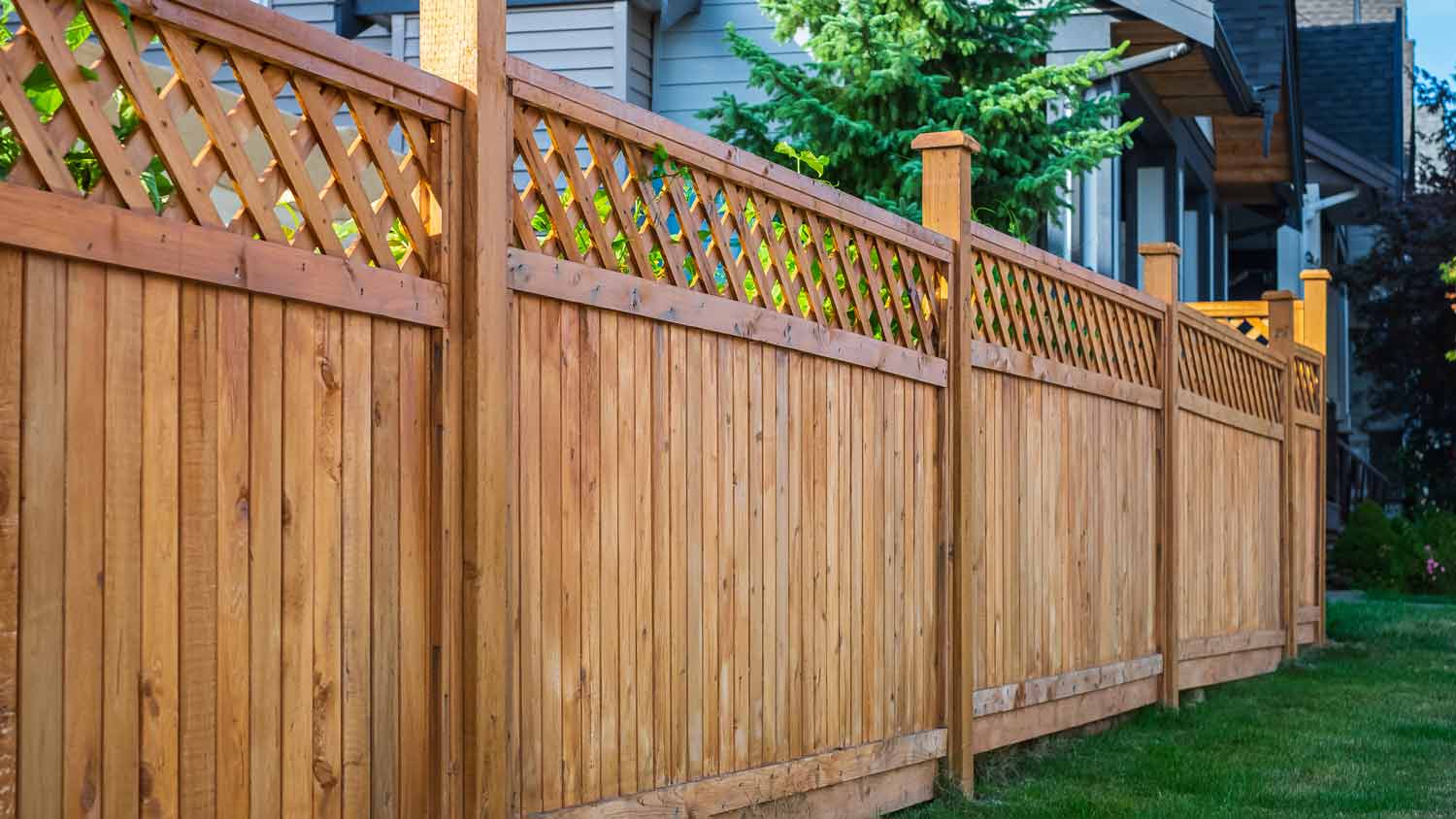
Explore the key factors that impact vinyl fence installation costs in Columbus, OH, including labor, materials, permits, layout, design, and yard conditions.
Vinyl fence fix: From fractured to fantastic


Vinyl fencing offers plenty of perks, including durability and few maintenance requirements. The downside of this type of fence? It’s susceptible to different kinds of damage, including holes, cracks, dents, and warping. Luckily, fixing a damaged vinyl fence doesn’t always require a professional's help. If you’re ready to roll up your sleeves, you can use this guide to learn how to fix a vinyl fence in just eight steps.
If your fence has a couple of small holes or dents, you can use a vinyl fence repair kit to fix it. However, this method won’t work if there’s widespread or significant damage. In that case, you’ll need to replace the damaged panels.
Spray the damaged section of the fence with a garden hose, making sure to get rid of any dirt and debris.
In a bucket, combine a squirt of dish soap with a gallon of warm water. Dunk your brush or sponge into the soapy water and scrub the damaged panel to clean the vinyl fence.

Using the sandpaper from your fence repair kit, sand 8 inches around all sides of the hole or crack. Focus on removing any loose vinyl from the fence.
When you’re done, wipe the area with a damp cloth.
If needed, use scissors to trim down the patch to fit over the hole or crack. Make sure it’s big enough to extend at least 1 inch over the damage on all sides.
Follow the manufacturer’s instructions to mix the compound. Use the kit’s putty knife to apply the compound over the patch, then smooth it out.
Let the compound dry completely. This could take up to several hours, depending on the product you used and the weather conditions in your area.
Add another layer of compound over the first one following the same process described in step five. Leave it to dry.
When the second layer of compound is fully dry, sand over the patch and compound to help it blend in with the rest of the fence.
Patching a small crack or hole in your vinyl fence is a fairly simple DIY task that costs $50 or less. Vinyl fence repair kits come with almost everything you need for the job, so you won’t have to blow your budget on any extra tools or supplies.
However, if your fence needs extensive repairs, it’s easier to hire a fencing pro near you instead of trying to fix it yourself. You’ll pay $50 per hour for a professional’s services (not including the materials), but if you’re short on time or want to avoid the hassle, it’s an option worth considering.
From average costs to expert advice, get all the answers you need to get your job done.

Explore the key factors that impact vinyl fence installation costs in Columbus, OH, including labor, materials, permits, layout, design, and yard conditions.

Black fencing adds some elegance to your property while maintaining security. Use this black chain-link fence cost guide to get an estimate for your fencing.

A fence can be a beautiful and functional addition to your property. Learn all the factors that determine your fence installation costs in Columbus, OH.

Wondering how to fix a rotted end on a fence gate? Your best bet is to replace the entire post. This step-by-step guide walks you through that process.

Looking for a bit of privacy in your backyard refuge? Explore six inexpensive ways to cover a chain-link fence for all the solitude you could ever want.

Looking for a little more seclusion in your yard? No problem. Learn how to cover a metal gate for privacy with a few simple tricks and tips.